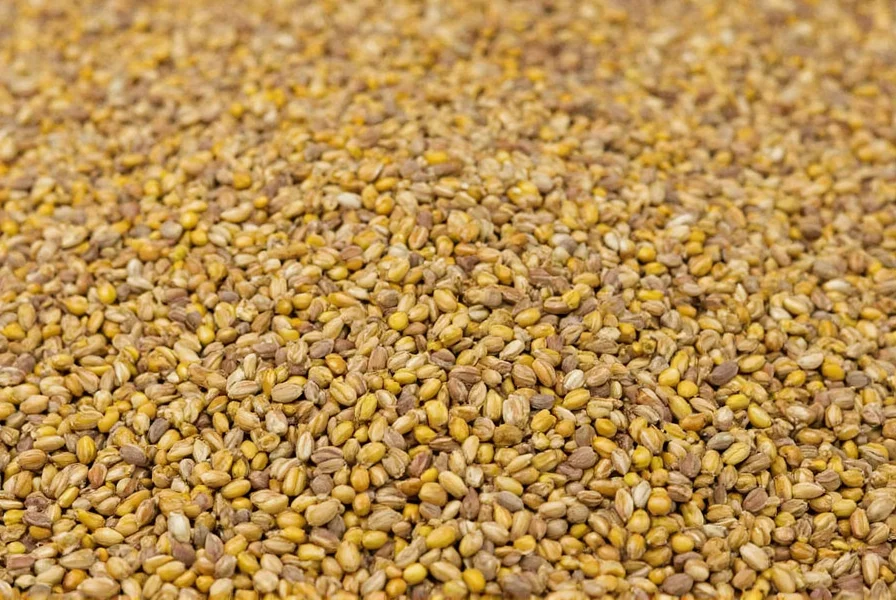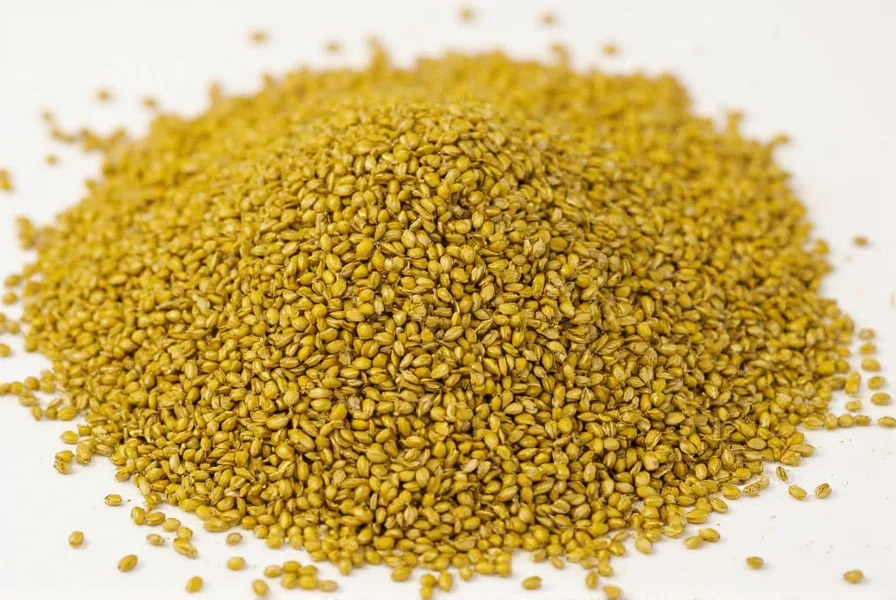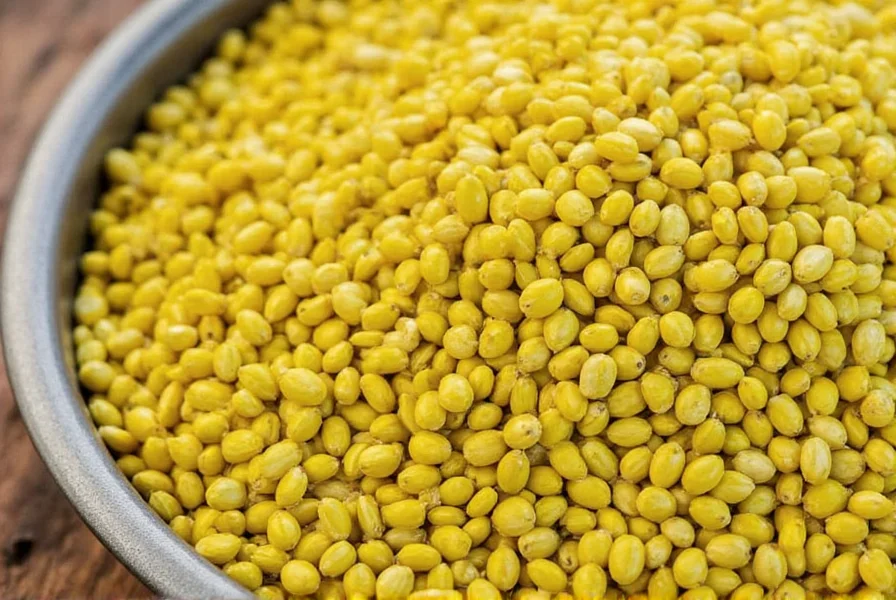Understanding the origin of mustard seeds requires exploring both their botanical source and historical cultivation. These tiny but powerful seeds have played significant roles in cuisines and traditional medicines worldwide since ancient times. The three primary mustard plant varieties each have distinct origins and characteristics that influence the flavor, color, and culinary applications of their seeds.
Botanical Origins of Mustard Seeds
Mustard seeds are the reproductive elements of mustard plants, which produce small, round seeds in seed pods after flowering. The three main commercial varieties differ in appearance and heat level:
| Mustard Type | Scientific Name | Seed Color | Heat Level | Primary Growing Regions |
|---|---|---|---|---|
| Yellow/White | Sinapis alba | Pale yellow | Mild | Mediterranean, Canada, Hungary |
| Brown | Brassica juncea | Brown | Medium-Hot | India, China, Nepal |
| Black | Brassica nigra | Dark brown/black | Hottest | Middle East, Mediterranean |
Historical Journey of Mustard Cultivation
The earliest evidence of mustard seed usage dates back to ancient civilizations. Archaeological findings show that mustard seeds were used in the Indus Valley Civilization around 2500 BCE. Ancient Egyptians included mustard seeds in burial sites, suggesting their cultural significance. Greek and Roman historians documented mustard's medicinal and culinary applications, with the Romans particularly responsible for spreading mustard cultivation throughout Europe.
During the Middle Ages, monasteries became centers for mustard production in Europe. French monks in Dijon perfected techniques for creating the famous mustard condiment by combining crushed seeds with verjuice (sour grape juice), establishing what would become the mustard capital of the world. By the 19th century, mustard production had become industrialized, with companies like Colman's in England pioneering commercial mustard production.
Modern Mustard Seed Production
Today, mustard seed cultivation spans multiple continents with different regions specializing in specific varieties. Canada has become the world's largest producer of yellow mustard seeds, particularly in the provinces of Saskatchewan and Alberta. India remains the primary producer of brown mustard seeds, which feature prominently in Indian cuisine. Black mustard seeds, though less commercially dominant today, still grow wild in Mediterranean regions and are cultivated in smaller quantities.
The agricultural process for mustard seeds begins with planting in early spring. Mustard plants grow rapidly, reaching heights of 3-6 feet within months. After flowering, the plants develop seed pods that must be harvested before they burst open. Modern farming uses specialized combines to collect the mature seeds, which are then cleaned, sorted, and prepared for various culinary and industrial applications.

Culinary and Medicinal Applications
Mustard seeds transform dramatically when processed. Whole seeds provide a nutty flavor when toasted, while grinding them releases enzymes that create the characteristic pungency when mixed with liquid. The type of liquid used (vinegar, wine, water) significantly affects the final flavor profile and heat level of prepared mustard.
Beyond culinary uses, traditional medicine systems have valued mustard seeds for centuries. Ayurvedic medicine employs them for digestive issues, while traditional Chinese medicine uses them for respiratory conditions. Modern research continues to investigate potential health benefits, including anti-inflammatory properties and cardiovascular support.

Sustainable Cultivation Practices
Mustard plants offer ecological benefits that make them valuable in sustainable agriculture. As a cover crop, mustard helps suppress soil-borne diseases and nematodes through biofumigation. Its deep root system improves soil structure, and the plant requires relatively little water compared to other crops. Many farmers incorporate mustard into crop rotation systems to enhance soil health without chemical inputs.
Understanding Mustard Seed Varieties for Home Cooking
Home cooks can leverage different mustard seed varieties to create distinctive flavors. Yellow mustard seeds work well for classic American-style hot dogs and deli mustards. Brown seeds provide the heat for spicy curries and traditional Indian preparations. Black seeds, though harder to find commercially, offer the most intense flavor for specialty mustards and pickling recipes.
When toasting mustard seeds, watch carefully as they can burn quickly. The seeds pop when properly heated, releasing aromatic compounds that form the foundation of many spice blends. For authentic Indian tadka (tempering), heat oil until shimmering, add mustard seeds, and cover immediately as they begin to pop to prevent them from jumping out of the pan.
Frequently Asked Questions
What plant produces mustard seeds?
Mustard seeds come from plants in the Brassicaceae family, specifically from three main species: Sinapis alba (yellow mustard), Brassica juncea (brown mustard), and Brassica nigra (black mustard). These annual plants produce small seeds in pods after flowering.
Where did mustard seeds originate historically?
Mustard seeds have multiple points of origin. Yellow mustard (Sinapis alba) originated in the Mediterranean region, brown mustard (Brassica juncea) came from the Himalayan region of India, and black mustard (Brassica nigra) originated in the Middle East. Archaeological evidence shows mustard seed usage dating back to 2500 BCE in the Indus Valley Civilization.
Which country produces the most mustard seeds today?
Canada is currently the world's largest producer of mustard seeds, particularly yellow mustard seeds grown in Saskatchewan and Alberta. India remains the primary producer of brown mustard seeds, which are essential to Indian cuisine. Different regions specialize in different varieties based on climate and agricultural traditions.
How do mustard seeds become spicy when prepared?
Mustard seeds contain an enzyme called myrosinase and a compound called sinigrin. When the seeds are crushed and mixed with liquid, these components combine to create allyl isothiocyanate, the compound responsible for mustard's characteristic heat. The type of liquid used (vinegar, wine, water) affects how much heat develops, with acidic liquids slowing the reaction for milder mustard.
Can you grow mustard plants from store-bought seeds?
Yes, you can grow mustard plants from raw, untreated store-bought mustard seeds. However, many commercially available mustard seeds have been heat-treated for shelf stability, which prevents germination. For best results, use organic, untreated mustard seeds and plant them in well-draining soil with full sun exposure. Mustard plants grow quickly and can produce harvestable seeds within 3-4 months.











 浙公网安备
33010002000092号
浙公网安备
33010002000092号 浙B2-20120091-4
浙B2-20120091-4